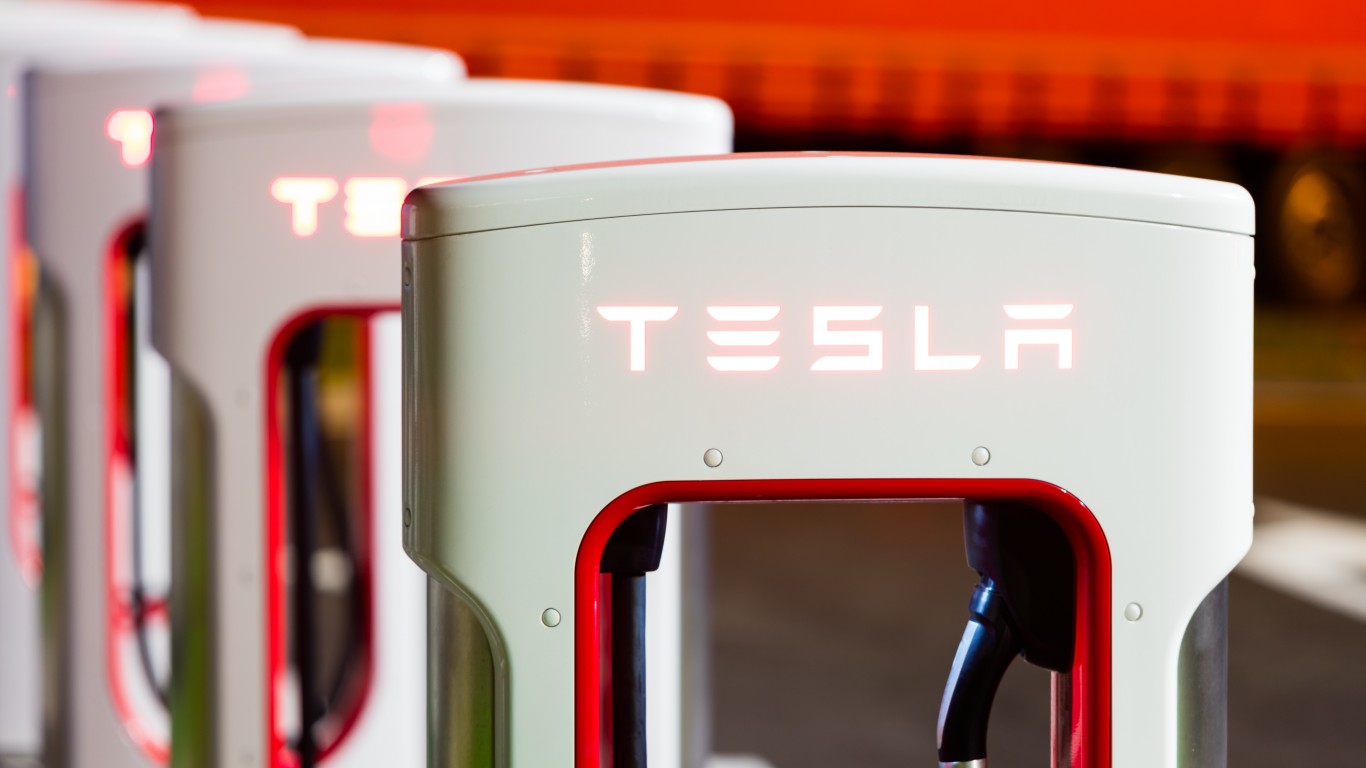Cars and Drivers
Analyst Predicts 'Disproportionate' Tesla Benefits From $2 Trillion Infrastructure Bill

Published:

President Joe Biden’s $2 trillion American Jobs Plan, aka the infrastructure plan, includes more than just fixing crumbling roads and rusting bridges. Included in the $621 billion transportation infrastructure portion of the proposed legislation is $174 billion for electric vehicles (EVs), the largest single piece of that portion of the bill.
Morgan Stanley auto industry analyst Adam Jonas noticed. He also noticed that Tesla Inc. (NASDAQ: TSLA) stands to benefit the most of any EV maker from Biden’s proposed plan.
Jonas names a few of the problems that will emerge from the conversion to EVs. Current battery technology is among the most acute. The way EV batteries are made today uses large amounts of fresh water and other materials (e.g., cobalt) that are produced by unsustainable mining practices and in some cases child labor. There is no recycling infrastructure for exhausted EV batteries, nor is there reliable sourcing of key raw materials like lithium and some rare earth elements.
Carbon emissions from the electricity used to charge their batteries are also problematic: “Moving transport to electric today may, in the very short term, have a diminishing impact on true CO2 emissions. However, the impact on emission reduction can be far greater as the energy mix shifts more significantly to renewable sources over the long term.” Jonas notes, for example, that for every EV purchased, a fossil-fueled vehicle is not.
The advantage to Tesla of this “de-adoption” is significant:
Fiscal policy used to accelerate EV sales, will accelerate the de-adoption of ICE cars. Tesla does not sell [internal combustion engine] ICE cars. Ostensibly, more aggressive policies to stimulate EV sales should be expected to repress the market share of the legacy ICE players, even as they aggressively roll out EV products. Tesla has a higher volume of EV products in the pipeline that will be rolled out at higher volume over the next 3 to 5 years vs. most other OEMs. Tesla has a more vertically integrated battery supply strategy vs. most other OEMs.
These are not small benefits for Tesla. Jonas now asks if the proposed $174 billion spending on EV infrastructure works to enhance “Tesla’s already disproportionate advantage over the rest of the legacy players and new entrants collectively.” His answer:
[W]e believe this may be possible. Within a range of potential outcomes, we believe investors may need to prepare for an EV infrastructure bill (including purchase incentives for EVs, development of charging and manufacturing infrastructure, grid enhancement etc.) that could disproportionately benefit Tesla and pure BEV startups near term while providing for a relevant, if not thriving terminal value for non-Tesla players long term.”
Then Jonas sums up the investment case, liberally using some capital letters:
Put it all together and we believe auto investors face greater risk NOT OWNING Tesla shares in their portfolio than OWNING Tesla shares in their portfolio.
Jonas reiterated Morgan Stanley’s Buy rating on Tesla stock and left unchanged the $880 price target the analysts set in January. On Sunday, Wedbush analyst Dan Ives raised the firm’s rating on Tesla to Outperform and set a price target of $1,000. Neither comes close to Ark Invest’s Cathie Wood’s three-year target of $3,000, or even $4,000 in a bull case.
Investors jumped on Tesla shares early Wednesday, bidding the stock up about 0.6%. By late morning, the stock traded down about 0.9% for the day, at $685.20 in a 52-week range of $106.67 to $900.40. The consensus 12-month price target on the stock is $630.23.
The average American spends $17,274 on debit cards a year, and it’s a HUGE mistake. First, debit cards don’t have the same fraud protections as credit cards. Once your money is gone, it’s gone. But more importantly you can actually get something back from this spending every time you swipe.
Issuers are handing out wild bonuses right now. With some you can earn up to 5% back on every purchase. That’s like getting a 5% discount on everything you buy!
Our top pick is kind of hard to imagine. Not only does it pay up to 5% back, it also includes a $200 cash back reward in the first six months, a 0% intro APR, and…. $0 annual fee. It’s quite literally free money for any one that uses a card regularly. Click here to learn more!
Flywheel Publishing has partnered with CardRatings to provide coverage of credit card products. Flywheel Publishing and CardRatings may receive a commission from card issuers.
Thank you for reading! Have some feedback for us?
Contact the 24/7 Wall St. editorial team.